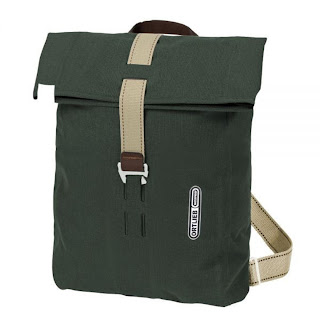Understanding the Difference between Water Resistant and Waterproof Back Panniers
Cycling tours and adventures often bring us face-to-face with the unpredictable forces of nature. Whether it's a sudden rain shower, a river crossing, or the splash from a puddle, your gear can be at risk of getting wet. To safeguard your belongings, choosing the right panniers is paramount. This leads us to a critical decision: should you opt for waterproof or water-resistant panniers? In this blog, we'll explore the differences between these two options to help you make an informed choice.
Understanding Waterproof Panniers
Waterproof panniers, as the name suggests, are designed to keep your belongings bone dry, even in the most challenging conditions. A classic example is the Ortlieb waterproof classic which is typically made from materials like PVC, TPU, or vinyl-coated fabrics, which create a barrier impervious to water. Here are some advantages of waterproof panniers:
Unparalleled Protection: Waterproof panniers offer the highest level of protection against rain, splashes, and even immersion. Your gear remains completely dry, even in torrential downpours.
Durability: These panniers are built to withstand rugged conditions. They're often abrasion-resistant and can handle years of rough use.
Easy to Clean: Waterproof materials are usually easy to wipe clean, making maintenance a breeze.
Buoyancy: Some waterproof panniers have buoyant properties, which can be a lifesaver if you're crossing bodies of water.
However, there are some downsides to consider:
Price: Waterproof panniers tend to be more expensive due to their specialised materials and construction.
Weight: The added layers of waterproofing can make these panniers slightly heavier than their water-resistant counterparts.
Less Breathability: Waterproof panniers can trap moisture inside, potentially causing condensation on your belongings in humid conditions.
Water-Resistant Panniers
Water-resistant panniers are designed to repel water to some extent, but they may not provide the same level of protection as waterproof ones. These panniers are often made from materials like nylon or polyester with a water-resistant coating. Here are the pros and cons:
Affordability: Water-resistant panniers are typically more budget-friendly than waterproof ones.
Lighter Weight: These panniers are often lighter, which can be advantageous for long rides.
Breathability: Water-resistant materials tend to be more breathable, reducing the risk of condensation on your gear.
However, there are some trade-offs:
Limited Protection: Water-resistant panniers may not keep your gear completely dry in heavy rain or if submerged.
Maintenance: They might require more frequent cleaning and reproofing to maintain their water resistance.
Less Durability: While durable, water-resistant panniers may not be as rugged as their waterproof counterparts.
How To Choose The Right One?
The choice between waterproof and water-resistant panniers ultimately depends on your specific needs and preferences. Here are some considerations to help you decide:
Weather Conditions: If you frequently cycle in wet or unpredictable climates, investing in waterproof panniers is a wise choice. They secure your luggage and other essential cycling accessories in heavy rain and water crossings.
Budget: Consider your budget. If you're on a tight budget, water-resistant panniers can offer reasonable protection without breaking the bank.
Weight Sensitivity: If you're a long-distance cyclist or prioritize a lightweight setup, you might lean toward water-resistant panniers due to their lower weight.
Duration of Use: Think about how often you'll use your panniers. If it's for occasional weekend trips, water-resistant options might suffice. For frequent, extended tours, waterproof panniers could be worth the investment.
Maintenance Commitment: Consider how much time and effort you're willing to invest in maintenance. Waterproof panniers often require less upkeep.




Comments
Post a Comment